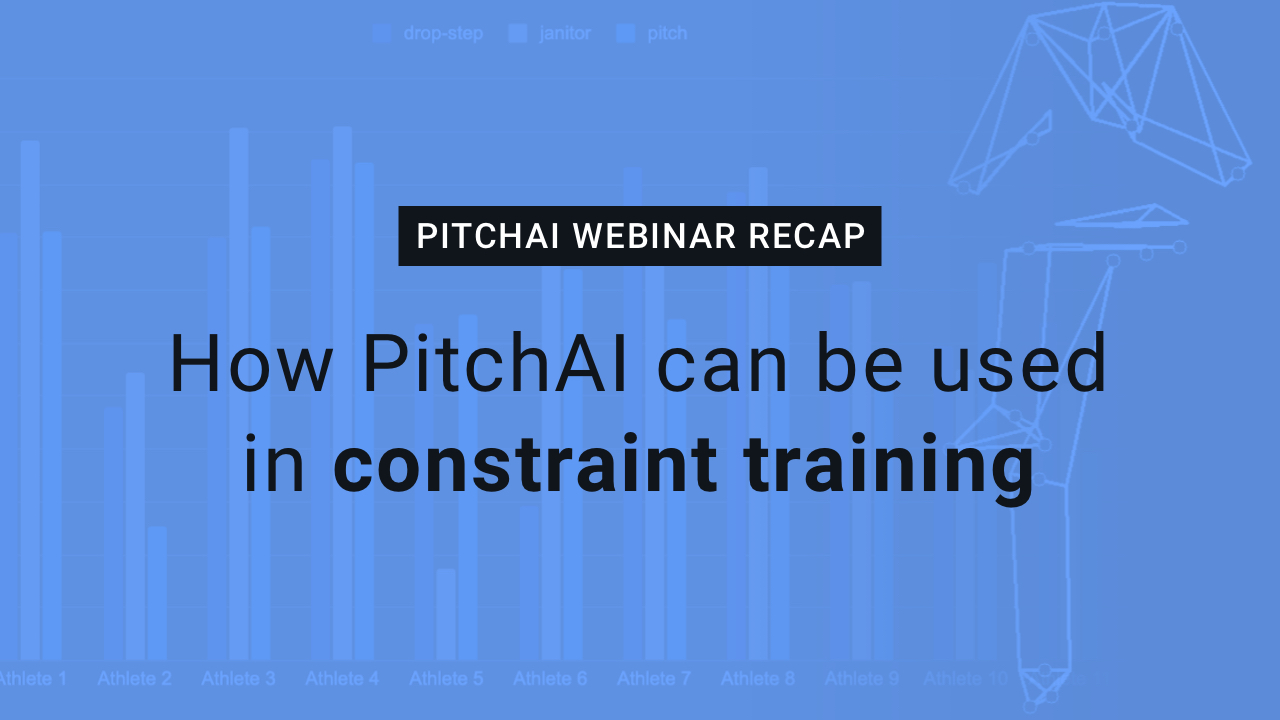Since the start of 2021, 18,000 Player Accounts have been created through the PitchAI portal and our partners’ platforms. PitchAI subscribers get exclusive access to our community Slack channel and webinar series. Create an account today to join us as we bring the next frontier of baseball analytics into the hands of coaches, athletes, and organizations across the world! Learn more about PitchAI.
With over 20,000 pitches assessed in four months, we’re seeing the value that our PitchAI technology brings to players of all ages at all levels. We’ve listened to the coaches using PitchAI and learned that we need to help you better understand three things:
- How our technology works,
- What biomechanics means, and
- Examples of how to use biomechanics data for training.
How PitchAI works


When you film your pitcher, our software takes that 2D video (step 1) and uses computer vision to create the skeleton overlay shown on the pitcher’s body (step 2). We then use advanced neural networks to translate that into 3D data (step 3) so we can calculate exactly how your body is moving (step 4). With an update coming soon, PitchAI will provide even more accurate and reliable biomechanics data for you to use with your athletes.
What biomechanics means
PitchAI’s single-camera, marker-less system delivers high-quality biomechanics data using mobile devices – anytime, anywhere. But coaches and athletes need to know what the means – that’s where we come in. To get started, take our free Introduction to Biomechanics with PitchAI certification course to understand what each PitchAI metric means, how to progress from basic to expert metrics, and how to compare metrics over time.
We’re grateful to work with great partners on creating more education for our users, including Casey Mulholland from Kinetic Pro Performance. Over the last few months, Casey has been working hard with our own Dr. Mike Sonne to launch a Mechanics module as part of his Kinnect Education platform. The two breakdown what biomechanics are and how to evaluate a biomechanics report. The first two units of the Mechanics Module are already out, and new units are added bi-weekly.
How to use biomechanics data for training
Today’s topic: Constraint Training
Constraint based training is a widely adopted framework throughout sport which involves modifying the requirements of the task (ie. pitch), environment, or individual to lead to changes in behavior or performance of a task. Some examples of these “constraints” are throwing the ball as far and high as possible, facing a different direction prior to throwing, or attaching a physical apparatus to the body to inhibit or encourage specific movements.
Ultimately, the idea behind a constraints-led approach is that athletes will develop a “feel” for a specific movement pattern and be able to more easily adapt that pattern when the constraint is removed. As it relates to pitching, our partners from Baseball Development Group have been investigating the influence of constraint drills on one’s mechanics.
In a group of elite High-School to Professional athletes, BDG tested Drop-Steps and Janitor Throws – two constraint drills targeted at altering trunk positioning and timing throughout the throwing cycle. Data was collected throughout training sessions where athletes performed several drills intermixed with pitches at the same perceived effort.
With nearly 300 pitches analyzed, Dr. Mike Sonne discussed how both constraint drills created a significant delay in the timing of trunk rotation throughout the throw, a commonality that high-velocity throwers share. Casey and Dr. Sonne dive more into this on the Kinnect Module.

Next up, Lennon Richards explored athlete-to-athlete variance between drill types and what that might mean for coaching application. One of the main topics of discussion was how a particular metric, like hip-shoulder separation, remained constant between drill types, but upon breaking the data down between athletes, there were several athletes that favoured a particular drill more so than another. This opened the floor for discussion on how PitchAI can be leveraged to prescribe drills, evaluate the effectiveness of a drill or coaching cue, as well as a tool for coaches to grade themselves.

Hear more about how PitchAI can be used in constraint training:

